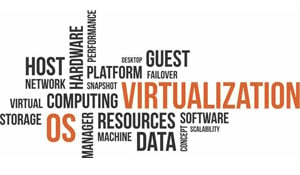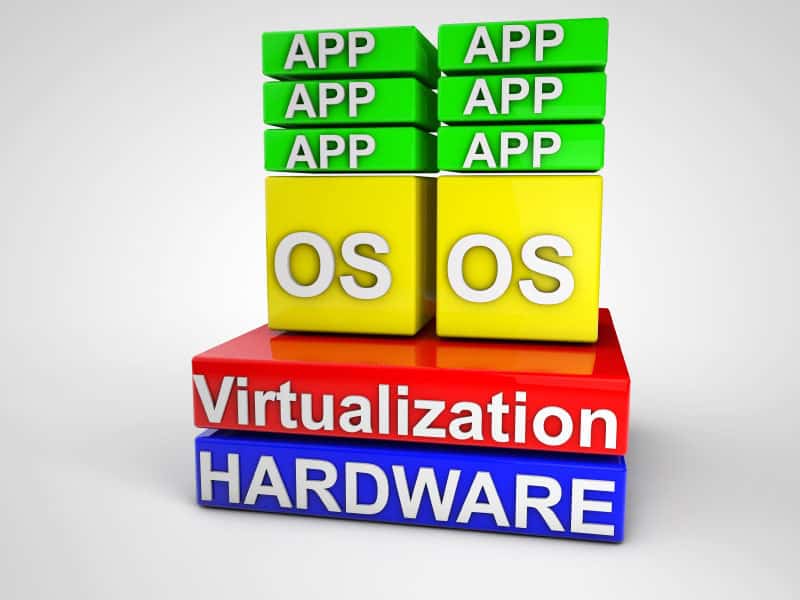Share this
Why Should I Look at Virtualization for My Small Business?
by Nathan.Fouarge on Apr 15, 2014 9:56:23 AM

Virtualization is one of those hot buzzwords that everyone talks about, but how does it fit into the small business world? When you mention virtualization, most people think about huge racks for servers virtualizing hundreds of virtual machines. They do not think about how virtualization could fit into the small business world and how much easier it can make a number of things for a small business.
Virtualization Does Not Have to Cost a Lot
The first major hurdle for any small business is cost. People think that virtualization costs a lot of money. In reality, you do not need to purchase a hugely specialized server that costs a lot of money in order to get into virtualization. For VMware, you need to buy a server that is on their HCL (hardware compatibility list), and for Hyper-V, you need to buy a server that supports Server 2012 or higher. Sizing the hardware is pretty easy too; you just have to think about what size machine your applications need. A simple file server does not need quad-core CPUs with 32GB of RAM with SSDs, so the virtual machine does not need that much either. Add up what each server/virtual machine needs, then add all the VMs up to get roughly how much resources you need. Next, look for a server that slightly exceeds those needs and buy two of them. Why two, you ask? With two servers, you can quickly failover to the other one if one of them dies. This approach of having two servers so that you have a spare will cost you a lot less in downtime in the long run.

Selecting Hypervisor Software for Your Virtual Servers
Next comes selecting the hypervisor software to run on your virtual servers. There are really two major players in the space, VMware and Microsoft, with their Hyper-V solution. VMware will cost you a bit of money to get what you need; around $600 for the Essentials version of their VMware infrastructure, but it will give you licenses for up to 3 hosts/servers and give you the management software you need to manage everything. For Microsoft’s Hyper-V solution, you can utilize their free Hyper-V server solution, or you can use Server 2012 standard or higher. I would personally recommend Server 2012 or higher, as while yes, Server 2008 R2 does have Hyper-V support, they have done a lot in the 2012 version to make it quite a contender with VMware. There are all sorts of ways you can make virtualization more expensive and faster, like with shared storage and any other number of things, but in a small business environment, typically, that is not needed.
Benefits of Creating a Virtual Environment
Now that you know all the hardware and software that is needed to do virtualization, you may be asking yourself, "Why should I deal with the hassle of virtualization?" Having a virtual environment makes many things very easy. For instance, migrating to new hardware is very easy, as all you need to do is get the new hardware, load up the hypervisor on the hardware, and replicate/migrate the virtual machines to the new server. No need to do a long install of Windows, install all the applications, get the drivers, and all of that. Simply moving that VM to the new hardware without all the hassle. Virtualization also makes failover/maintenance very easy. I recommend purchasing at least two physical servers for exactly this: failover. How much does it cost you to be down per minute/hour/day? How many hours or days do you have to be down over the next 3 years to rationalize the purchase of that second server? If you just do it now, you will save yourself time and money.
Key Benefits of Virtual Machine Backups
Virtualization also makes backup very easy. Instead of having to select single files and folders to do backups, any good backup software will allow you to back up the entire virtual machine without having to load a backup agent on the virtual machine. Another key incentive to dealing with virtualization is the benefit of having a testing ground to test new software upgrades/service packs and to test your backups. Spinning up a replica of a virtual machine and then testing the latest and greatest software upgrade could save you a lot of time. You can also check your backups by doing a restore without affecting your production virtual machine, thus giving you the security and peace of mind of knowing that your backups are working.
Keeping Virtual Backup Costs in Check
All of the reasons provided for dealing with virtualization sound good, but how complex are all of those operations to do? This is something that NovaBACKUP addressed in a recent release. NovaBACKUP Server Agent can backup Hyper-V and VMware virtual machines, and it can now do everything else that I outlined above as good reasons to deal with virtualization. While other products out there also do everything that I stated above, these solutions cost a lot of money and are not small business-targeted, so all of the cost and time savings that you expected to get out of going virtual just went out the window.
NovaBACKUP Server Agent allows you to back up your virtual machines on either VMware or Hyper-V, along with restoring single files from those backups. You can also replicate VMware and Hyper-V virtual machines from host to host for all of those testing and failover scenarios. Having every feature available on the market is all well and good, but if it takes a rocket scientist to figure out how to use all of them, it still really does not help you. That is precisely why we added a virtual dashboard within the software that has everything you need to perform virtual backup and replication operations at a glance and with a very intuitive interface.
Share this
- Pre-Sales Questions (109)
- Tips and Tricks (99)
- Industry News (56)
- Reseller / MSP (38)
- Best Practices (33)
- Security Threats / Ransomware (29)
- Disaster Recovery (26)
- Applications (25)
- Cloud Backup (24)
- Storage Technology (23)
- Backup Videos (22)
- Compliance / HIPAA (22)
- Virtual Environments (17)
- Technology Updates / Releases (9)
- Infographics (8)
- Backup preparation (5)
- Products (US) (3)
- Company (US) (1)
- Events (1)
- Events (US) (1)
- April 2025 (2)
- March 2025 (1)
- February 2025 (2)
- January 2025 (2)
- December 2024 (1)
- November 2024 (1)
- October 2024 (1)
- September 2024 (2)
- August 2024 (1)
- July 2024 (2)
- June 2024 (2)
- May 2024 (1)
- April 2024 (2)
- March 2024 (2)
- February 2024 (2)
- January 2024 (1)
- December 2023 (1)
- November 2023 (1)
- October 2023 (1)
- September 2023 (1)
- August 2023 (1)
- July 2023 (1)
- May 2023 (1)
- March 2023 (3)
- February 2023 (2)
- January 2023 (3)
- December 2022 (1)
- November 2022 (2)
- October 2022 (2)
- September 2022 (2)
- August 2022 (1)
- July 2022 (1)
- June 2022 (1)
- April 2022 (1)
- March 2022 (2)
- February 2022 (1)
- January 2022 (1)
- December 2021 (1)
- November 2021 (1)
- September 2021 (1)
- August 2021 (1)
- July 2021 (1)
- June 2021 (1)
- May 2021 (2)
- April 2021 (1)
- March 2021 (2)
- February 2021 (1)
- January 2021 (1)
- December 2020 (1)
- November 2020 (1)
- October 2020 (1)
- September 2020 (4)
- August 2020 (2)
- July 2020 (1)
- June 2020 (1)
- May 2020 (1)
- April 2020 (1)
- March 2020 (3)
- February 2020 (2)
- January 2020 (2)
- December 2019 (1)
- November 2019 (1)
- October 2019 (1)
- August 2019 (1)
- July 2019 (1)
- June 2019 (1)
- April 2019 (1)
- January 2019 (1)
- December 2018 (1)
- November 2018 (2)
- August 2018 (3)
- July 2018 (4)
- June 2018 (2)
- April 2018 (2)
- March 2018 (2)
- February 2018 (2)
- January 2018 (3)
- December 2017 (1)
- September 2017 (1)
- May 2017 (2)
- April 2017 (5)
- March 2017 (4)
- February 2017 (1)
- January 2017 (1)
- December 2016 (1)
- November 2016 (1)
- October 2016 (2)
- September 2016 (1)
- August 2016 (3)
- July 2016 (2)
- June 2016 (2)
- May 2016 (7)
- April 2016 (8)
- March 2016 (1)
- February 2016 (2)
- January 2016 (12)
- December 2015 (7)
- November 2015 (5)
- October 2015 (6)
- September 2015 (1)
- August 2015 (2)
- July 2015 (2)
- June 2015 (2)
- May 2015 (1)
- April 2015 (4)
- March 2015 (3)
- February 2015 (4)
- January 2015 (2)
- October 2014 (4)
- September 2014 (8)
- August 2014 (5)
- July 2014 (7)
- June 2014 (3)
- May 2014 (3)
- April 2014 (9)
- March 2014 (7)
- February 2014 (7)
- January 2014 (5)
- December 2013 (4)
- October 2013 (7)
- September 2013 (2)

